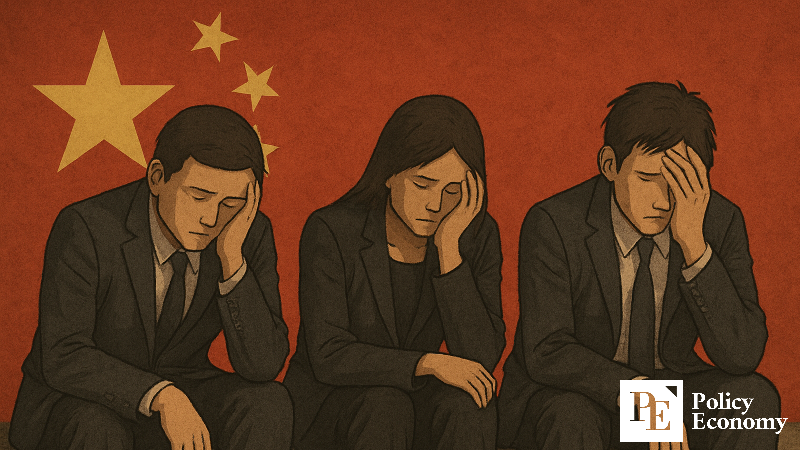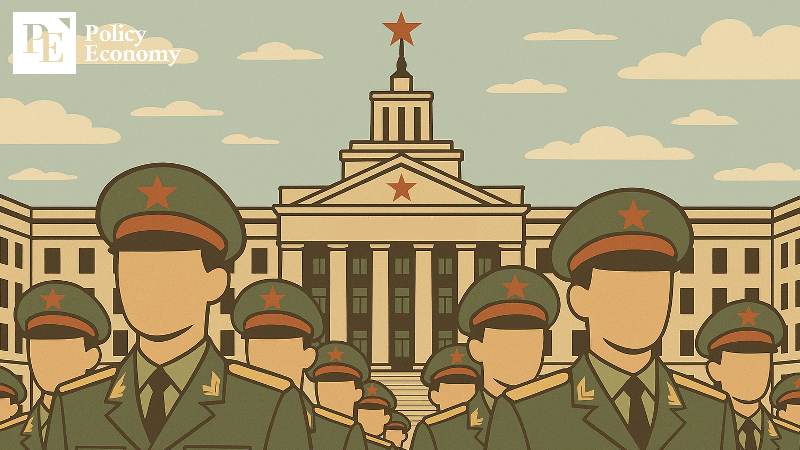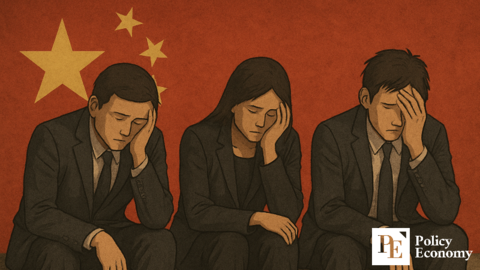China’s Youth Job Crisis Deepens, Forcing Rethink of Career Choices
Input
Modified
China’s Youth Unemployment Rate Soars to 18.9% in August Seasonal Factors, Economic Slump, and Poor Policy Design Weigh Heavily “Maybe I Should Just Join the Army”: Young Chinese Struggle for Stable Jobs

China’s youth unemployment rate surged last month as the economy slowed and hiring at private firms dropped sharply. The downturn, compounded by seasonal factors and other unfavorable conditions, has led to a marked deterioration in labor market indicators.
China’s Youth Employment Crisis Deepens
On the 18th, China’s National Bureau of Statistics reported that the jobless rate among 16- to 24-year-olds reached 18.9% in August. That was up 1.1 percentage points from July and far above the overall national unemployment rate of 5.3% for the same period.
One key factor behind the surge is seasonal. China’s youth jobless rate typically rises in summer as graduating students unable to secure employment are added to the count. This year, 12.22 million undergraduates completed their studies in June—about 40% more than five years ago.
Weak hiring appetite from private companies is another major drag. From January to August, private-sector investment fell 2.3% year-on-year. With economic uncertainty unresolved, businesses have been reluctant to expand hiring, worsening the youth employment crunch.
Other obstacles cited include poor working conditions, the loss of high-value jobs due to government restrictions on the IT sector, stimulus measures focused on short-term effects, and a mismatch between labor supply and demand. Together, these factors have left young Chinese struggling more than ever to find stable jobs.
Is the Real Unemployment Rate Even Higher?
Markets believe China’s true youth unemployment rate far exceeds the official figure, pointing to flaws in the way it is measured. In June 2023, when the youth jobless rate hit 21.3%, the National Bureau of Statistics suspended publication for six months, citing a need to revise its methodology. When reporting resumed in January last year, students still in school were excluded from the base population, a method at odds with International Labour Organization (ILO) standards. Under ILO rules, high school and university students seeking jobs or doing part-time work are counted as employed or unemployed, while only those not looking for work are excluded.
The definition of employment itself has also drawn criticism. China currently classifies anyone aged 16 or older who works at least one hour a week for wages or business income as employed. This means someone working just a single hour of part-time labor is excluded from the unemployment tally. Such metrics not only fail to reflect actual income levels and broader economic conditions but also risk creating a statistical illusion that diverges from reality.
Analysts warn that selective data cannot shield China from the broader economic fallout of soaring youth joblessness. As younger generations—traditionally the most active consumers—struggle with employment, overall spending growth will inevitably slow. There are also concerns about worsening mental health issues from relentless competition, or a rise in “tang ping” (lying flat) youth who abandon ambition and pursue only minimal living standards. A study last year found that more than 9 million out of China’s 156 million teenagers aged 10–19 were suffering from depression or anxiety, underscoring the scale of the problem.

Military Careers Regain Appeal Amid Youth Job Crisis
Some analysts suggest China’s severe youth employment crunch is reshaping job preferences among young people. In June, the South China Morning Post reported that high unemployment and various government incentives were fueling greater interest in the People’s Liberation Army (PLA). Last month, China’s Ministry of National Defense announced the creation of three new military academies and began recruiting high school graduates this summer. A related video drew over 8 million views on the social media platform Weibo.
Just a few years ago, military service was widely shunned by Chinese youth. Since the Communist Party’s 2016 military reforms, the number of slots at China’s 27 academies has risen steadily. Between 2018 and 2021, enrollment averaged 13,000 annually, increasing by about 2,000 more each year in 2022 and 2023. Yet applications lagged, and in 2023—despite a record 12.91 million students sitting for the gaokao college entrance exam—many academies still failed to fill their quotas.
Experts point to both social perception and compensation as reasons. Yang Taiyuan, a researcher at the Integrated Science and Technology Strategy Center of Tsinghua University, noted: “Although PLA pay has increased, income levels remain lower than in more economically developed regions. The gap between academy life and desired living standards has discouraged many youth from applying.”
Now, however, a destabilized job market is turning the tide. With attractive private-sector opportunities dwindling, the stability of military and other government positions is being viewed in a new light. Unless Beijing delivers more effective employment measures, this shift toward state-backed careers could deepen further.






















Comment